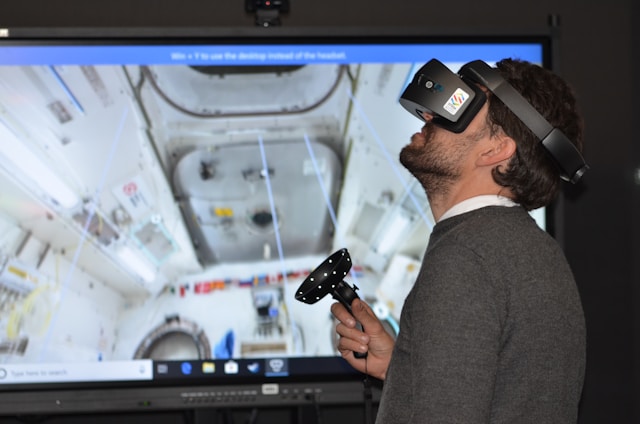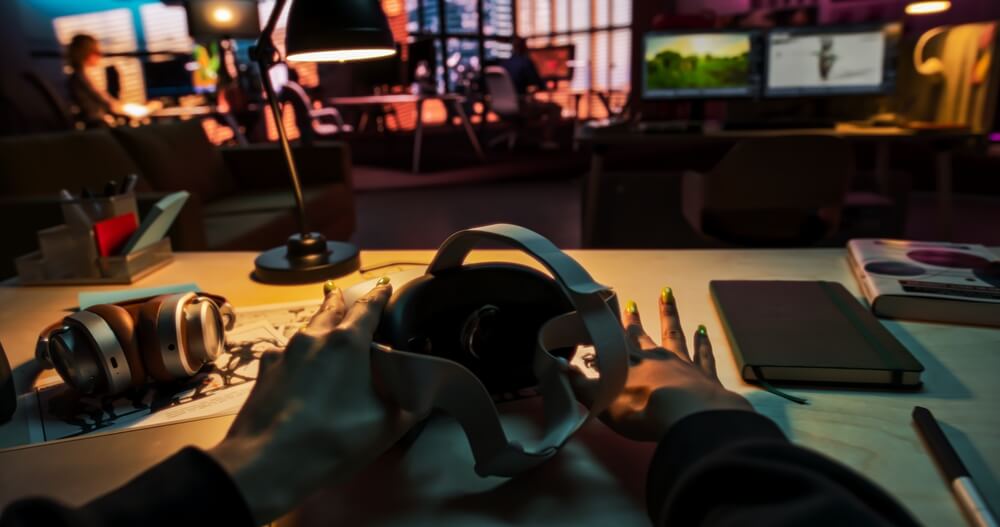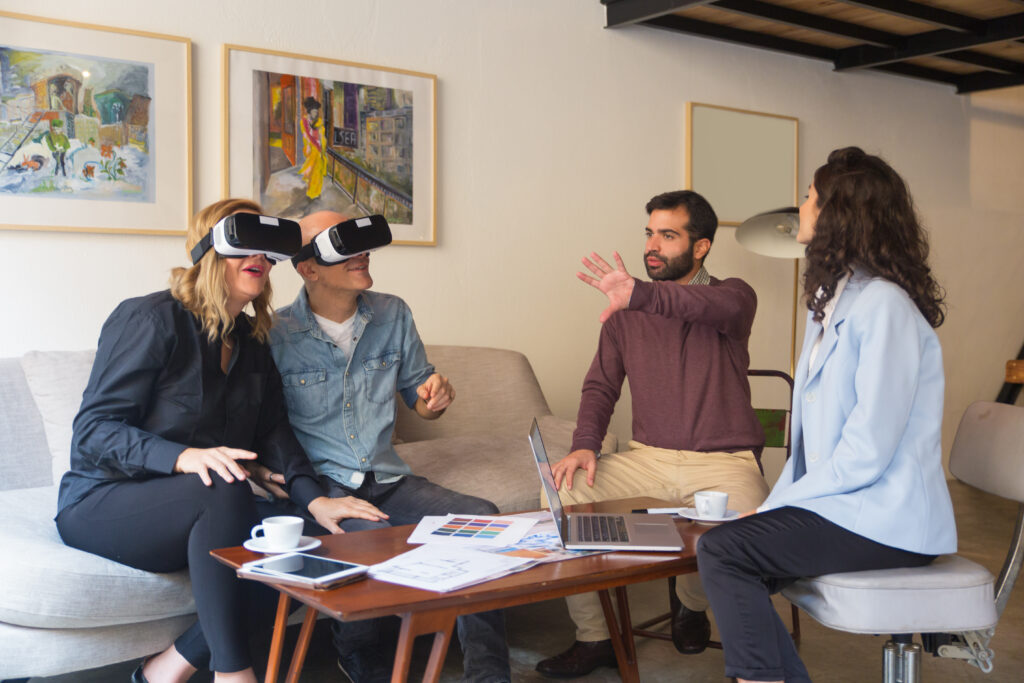Enhancing Employee Engagement with VR: Benefits Beyond Traditional Training Methods
Table of Contents:
Training in VR goes far beyond the capabilities of traditional methods. It is more engaging, it is better, and it lets employees practice in real-life situations simulated in the digital world. Therefore, in this article, we shall look at it more closely. How does it outperform traditional training and what are the benefits of VR training? Find it all out!
VR Training vs. Traditional Training
The best way to show the power of virtual reality training experiences is to compare them with traditional training. So, in what aspects is the former better? Take a look at our list of VR training’s advantages below.
Engagement
Can traditional training be engaging? Yes, though it largely depends on the speaker’s skills, the setting, and the equipment they can bring. On the other hand, VR training will almost certainly be engaging.
Why? You can select the setting and design a space that meets your needs and is related to the topic of the training. Moreover, it enables you to utilize 3D elements—you just have to design them, not own (and transport) them. Add to that embedding videos or visualizing data in 360°, and you can grab your audience’s attention much better than with traditional methods.
Diversification and Quality
Another aspect in which VR employee training wins over traditional methods is quality. Due to the customization options of the VR worlds, you can simply create a better training environment that you often have at your disposal physically.
For instance, imagine a VR fire safety training. How would you imitate the flames in your office so that they would move naturally and act as the threat they are? This would be extremely difficult. But, if you recreate your office in VR, you can introduce digital flames, showcasing your employees the true dangers of fire.
At the same time, VR enables you to practice different situations related to such fires. For example, fire spreading from various points in the office. Thanks to this, it becomes possible to practice handling different scenarios and types of the same threat, and not only a standardized one, making the training significantly better.
Scalability and Automation
Both scalability and automation have become buzzwords, but when it comes to VR training vs. traditional training, there is much more to them. Why?
- Traditional training—it is not scalable; the more people take part in it, the harder it is to prepare and you need to get ready every time you conduct it.
- VR training—you can create a training scenario once and re-use it as many times as possible. You may introduce NPCs to the training to automate it (completely or partially), reducing subsequent sessions’ costs.
Expenses and Convenience
VR training might require a higher initial investment vs. traditional training. However, in the long run, it costs less.
After getting the right platform and purchasing the VR equipment, you just need to design the training scenarios, and voila—your training is ready. After that, the costs go down when compared with traditional methods, mainly because:
- You do not have to cover transportation costs for team members from different offices.
- You do not need a large space to accommodate everyone you want to train.
- You do not have to organize catch-up meetings and additional workshops since the training is more engaging—your employees learn more from it.
- You can automate parts or the whole of your training.
In the end, VR training is not just better than traditional training—it is also cheaper.
VR Training – Benefits and Conclusions
VR training has a plethora of advantages over traditional methods. Therefore, companies will benefit from implementing it. If you are looking for a reliable, customizable solution, contact us at Mazer and learn more about our VR Trainer—the ultimate tool for preparing and conducting VR training for finance, healthcare, education, and corporations.
You may also read: VR Training Revolution: How Mazer Trainer is Simplifying No-Code Training Creation

Author: Rafał Siejca
Rafal has over twenty years of corporate experience, including roles at Millennium Bank, Comarch, and leading software teams at PZU, one of Europe’s largest insurance companies. As one of Poland’s few true VR experts with a decade of experience, he ensures timely, high-quality project delivery as CEO and CTO.










